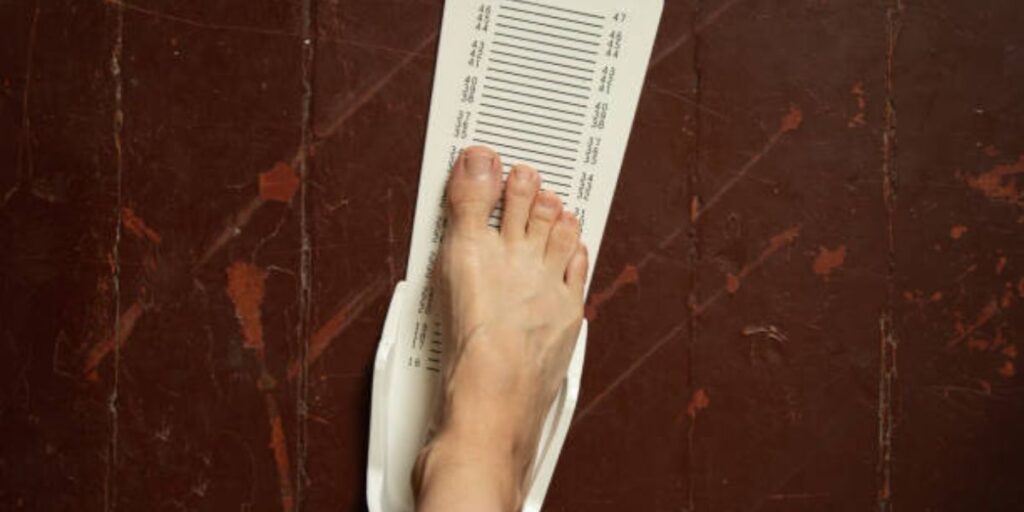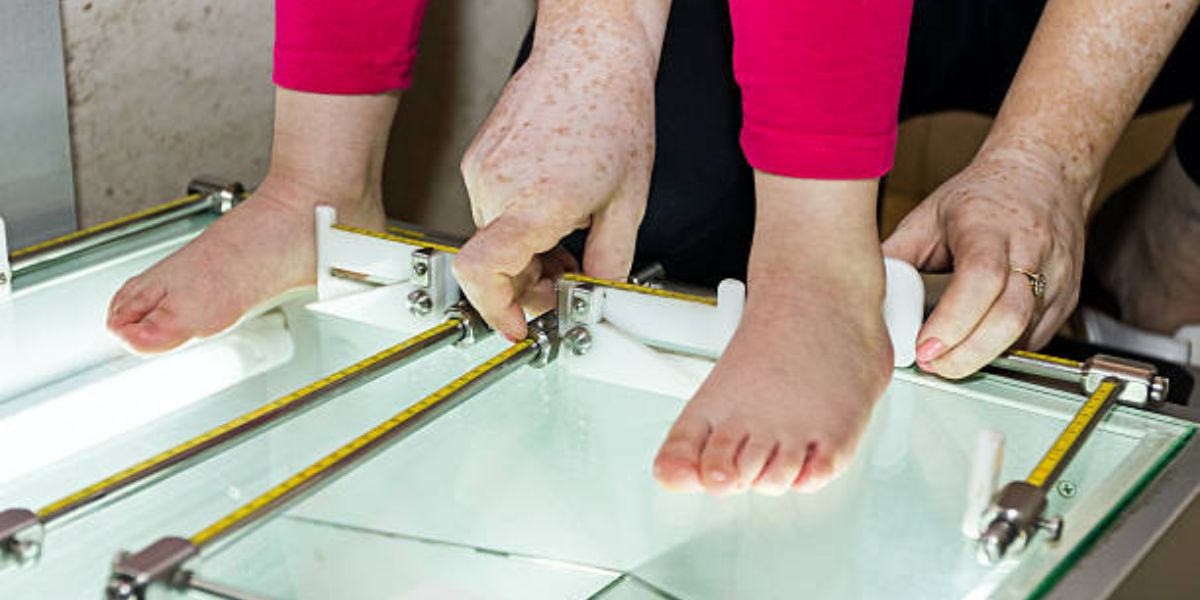Understanding Foot Arch Types
Understanding your foot structure starts with measuring foot arch height. It may seem minor, but your arch shape affects posture, balance, and even joint health. Whether you’re dealing with discomfort or buying new shoes, knowing your foot arch type can make all the difference. A simple wet footprint test at home or a foot scanner test at a clinic can reveal the shape and support your feet truly need. This knowledge helps in choosing shoes for foot arch type, avoiding pain and injury. With just a few easy steps, you can unlock insights into your foot biomechanics and walk more comfortably every day.
Foot Arch Measurement Guide
You can measure your foot arch at home using a simple wet paper test. Wet your foot, step on paper, and compare your print to a foot arch height chart. This method mimics the wet footprint test professionals use in clinics.
If you prefer tech, try a foot scanner test in a store or podiatrist’s office. Either method supports a DIY or professional approach to accurate foot arch measurement.
Interpreting Your Arch Height Test Results
Once your footprint appears, it’s time to read arch test results. A full wet print means low arch; little contact signals a high arch; a moderate print shows a neutral arch. This step decodes your arch height and balance.
Knowing this helps you spot gait issues and foot arch imbalance early. You learn whether you have overpronation and flat feet or underpronation and high arches, guiding shoe and insole selection.
Arch Height Chart and Ideal Arch Size
A visual foot arch height chart compares your print width and gap. Data shows ideal arch size supports even weight distribution and proper alignment. Too low or too high wobble your posture and raise foot biomechanics challenges.
This chart helps spot your arch relative to norms. It acts as a barometer for proper foot alignment so you can address issues early and avoid chronic pain.
Descriptions of Arch Types and Shoe Features That Match Them
Neutral (Medium) Arch
Medium arches offer natural shock absorption and spring. Neutral arch insoles maintain this balance and reduce stress. Proper shoe design supports gait without rigidity or excessive cushioning.
Flat (Low) Arch
Low arches—flat feet symptoms include fatigue and arch strain—require stability and motion control. Shoes should correct overpronation and flat feet with firm midsole support. Insoles must prevent collapse.
High Arch
High arches may lead to pain and instability due to reduced flexibility and shock absorption. High arch support shoes cushion and align your foot. This combats underpronation and high arches by adding stability.
What Do High Arches Mean?
High arches mean your foot doesn’t flatten enough. This often stems from causes of high arches such as genetics or neurological conditions. Resulting pressure on heels and balls of feet may lead to pain or stress fractures.
Detecting high arches early, through home tests or clinic podiatrist foot exam, helps prevent complications. You can correct alignment with supportive footwear.
What Do Flat Feet Mean?
Flat feet occur when your arch collapses. You will notice pain or swelling near the arch and ankles. These signs of flat feet often include tight calf muscles. Without support, this condition may trigger shin splints or back strain.
Proactive measures—like using motion-control insoles and stretching—can ease symptoms. You’ll benefit from correcting poor foot posture for better alignment.
Best Insoles for Each Arch Type
Matching insoles to your arch is vital. Runners might prefer custom orthotics for foot arch, while everyday users may choose pre-made. Best insoles for arch support follow three principles: arch shape match, material comfort, and durable build.
Consider a table that compares high arch (cushioning, rigid support), flat feet (motion control, firm arch), and neutral arches (balanced support). This aids your decision for comfortable and effective posture alignment.

How Should New Insoles Feel?
New insoles should feel snug but not painful. They might require a break-in period of several days. A tight or awkward fit suggests poor insole choice. Good insole fit for arch support feels natural after initial use.
Warning signs include pain or altered gait. If you feel discomfort, consult a specialist or switch insoles. Comfortable shoes for every arch type should never hurt you.
Comfort Counts Most: Final Tips for Healthy Feet
Always replace worn insoles and rotate shoes to prolong support. Regular assessments ensure your foot arch type stays constant. For runners, arch support for runners matters to prevent injury and improve performance.
Listening to your feet pays off. Unusual pain may hint at common foot arch problems. Getting professional guidance can save your posture and gait down the road.
How to Heal a Sprained Ankle Fast: Quick Recovery Guide
FAQs
How do I measure my foot arch height?
Use a wet footprint test or a ruler to check the curve between your heel and toes.
How do you measure the height of an arch?
Measure from the floor to the highest point of your foot’s arch while standing.
How do I tell if my foot arch is high?
If most of your midfoot doesn’t touch the ground in a wet footprint test, you likely have a high arch.
How tall is the arch in feet?
A normal foot arch typically measures around 1 to 1.3 inches high when standing.
Welcome to Heel Tooth! I’m Lee Marvin.

